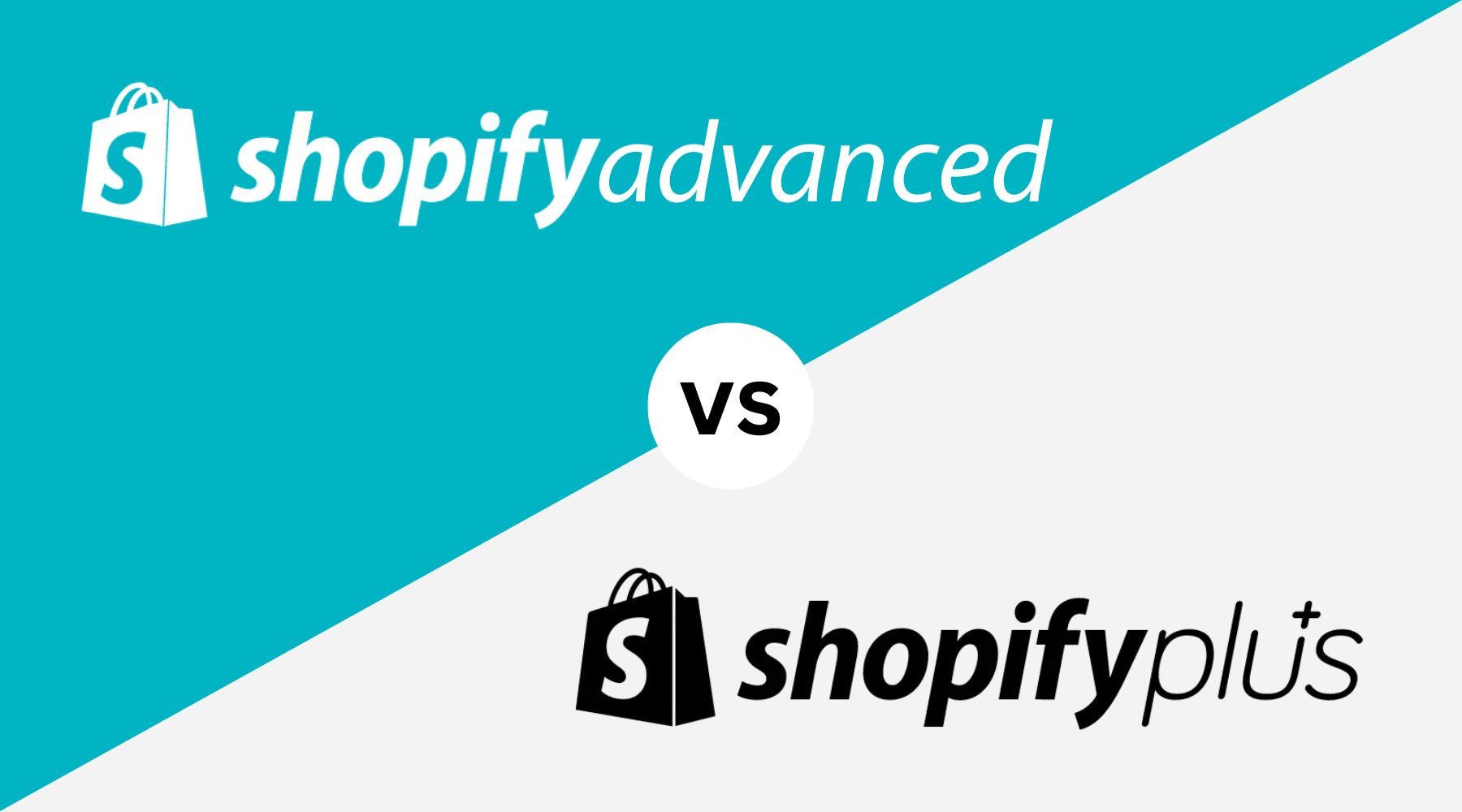Shopify offers various plans that are designed to keep pace with your growth. But as soon as you want to go beyond the standard level, you are faced with a clear decision: Shopify Advanced or Shopify Plus? Most people compare the two purely on price, but that's not enough.
It's not about monthly fees, but about how much control, scalability, and automation your business model really needs. Advanced covers the solid basics. Plus, on the other hand, pushes the technical boundaries with dedicated B2B support, multi-store options, and full checkout access.
In this article, you'll find out which differences are actually crucial and which plan really supports your growth.
Shopify Pricing Plans: From Starter to Plus
The platform offers five different tariffs based on the size and complexity of your business: Starter, Basic, Shopify, Advanced, and Plus. Each plan expands the functions and thus adapts to gradually increasing requirements, from entry-level solutions to complex e-commerce setups.
The differences between the lower plans are manageable: more employees, better reports, lower transaction fees. But it is only when you switch from Shopify Advanced to Shopify Plus that the platform changes fundamentally (technically, strategically, and operationally).
Here you can find an overview of the current plans:
|
Plan |
Price (monthly) |
Transaction fees |
Target group |
Special features |
|
Starter |
approx. $5/month |
5% |
Social selling, beginners |
Only link sales, no own store |
|
Basic |
approx. $39/month |
2.0% |
Startups, small brands |
Basic functions, 2 employees |
|
Shopify |
approx. $109/month |
1.8% |
Growing D2C shops |
Standard reports, 5 employees |
|
Advanced |
approx. $399/month |
2.5% + $0.30 per transaction (with Shopify Payments) |
Scaling brands |
Professional reports, individual shipping zones |
|
Plus |
from $2,300/month |
2.15% + $0.30 (Visa/Mastercard), 3.15% + $0.30 (Amex/international) |
Enterprise, international shops |
Own checkout, B2B, launch engine |
1. Target Audience: Who Is Each Plan Built For?
Advanced is aimed at ambitious D2C brands that already generate more than $30,000 per month and want to scale but do not yet require a complex system landscape. The focus is on performance, optimization, and data control. For many growing brands, this plan is the logical next step after the standard option.
Plus, on the other hand, is intended for brands that have already reached the enterprise segment, with an annual turnover of around $900,000 or more, an international focus, and requirements that go beyond the standard functions. This is no longer just about more functions but about technical control, automation, and strategic scaling.
While the basic setup supports a single storefront, the higher-tier plan lets you run up to 10 stores simultaneously, each with its own domain, language, and catalogue.
This is essential for brands that operate globally and want to sell locally. B2B setups with separate price lists, login areas, or order processes can only be handled properly with a higher-tier solution.
2. Pricing Breakdown: Shopify Advanced vs Plus
The lower-tier plan costs around $299/month for annual payment and around $399/month for monthly billing. For many growing brands, this is a fixed and predictable price that can be easily integrated into the margin. The transaction fees are 2.5% plus $0.30 per transaction.
The higher-tier option starts at around $2,300/month; the actual amount depends on the sales volume. As soon as your monthly turnover rises above $960,000, a transaction-based rate of 2.15% plus $0.30 (Visa/Mastercard) or 3.15% plus $0.30 (Amex/international cards) is automatically applied. This may seem high at first, but above certain thresholds it is more favorable than the percentage transaction fee in the lower-tier plan.
Here is a comparison of the effective costs depending on the turnover:
|
Monthly turnover |
Advanced ($299 + 2.5% + $0.30 per txn) |
Plus (from $2,300 or transaction fee) |
|
$100,000 |
approx. $2,799 |
$2,300 (fixed price) |
|
$250,000 |
approx. $6,545 |
$2,300 (fixed price) |
|
$500,000 |
approx. $12,045 |
$2,300 (fixed price) |
|
$1,000,000 |
approx. $25,295 |
$2,575 (2.15% + $0.30 per txn) |
The larger your volume, the more advantageous the offer becomes. This applies to both functionality and financial benefits.

3. Customization: Checkout Control & Developer Access
With Advanced, you can only design the checkout within predefined themes. You can adjust colors, layouts, and texts but cannot change any logic or functionality. Especially with upsells, customized payment processes, or dynamic content, you will quickly reach your limits.
Plus opens up a whole new level here: you get full access to the checkout code via checkout.liquid, can write your own validation logic, incorporate dynamic content, and integrate external systems directly. In combination with the script editor and extended APIs, you can create a checkout that perfectly matches your branding and conversion strategy.
This is a real game changer for brands that focus on performance and want to manage their customers along the entire funnel. You not only gain creative freedom. You also get the opportunity to turn the checkout into a scalable conversion driver.
4. Multistore, Multilingual & Currency Support
With Advanced, you manage exactly one store per contract. Localization is only possible to a limited extent via language switching, limited currency options, and manual control. As soon as you want to play several markets at the same time, you will come up against these limits.
The higher-tier option removes this limitation: You can operate up to 10 individual storefronts. And with your own domains, languages, catalogs, and price structures. This allows you to control your customer experience in the EU, the USA, or the MENA region precisely in line with local expectations. Currencies, tax rates, or shipping logic. Everything can be configured independently for each market.
This is particularly important for brands with an international reach. You retain centralized control over your brand while remaining regionally relevant.
5. B2B Capabilities: What Only Shopify Plus Offers
The lower-tier plan covers classic D2C processes but lacks central functions for the B2B sector. If you want to serve retailers, major customers, or distributors, you will quickly reach your limits with standard functions.
Plus offers its own B2B suite here: you can define customized prices, order limits, net displays, and payment options. All directly in the system, without external tools. Via B2B portals with a login function, business customers can access personalized catalogs, place bulk orders, or purchase using fixed conditions.
This is a real advantage for brands that serve both D2C and B2B. You do not have to maintain a separate shop or rely on third-party integrations; instead, you manage everything centrally via the existing platform.
6. Automation & Operational Tools
Advanced offers you basic functions, but you are limited when it comes to automation. Tasks such as price changes, discount campaigns, or mass processing can only be mapped manually or via additional apps.
With Plus, you get exclusive tools that start right here. Shopify Flow allows you to automate recurring processes, such as the automatic categorization of new customers or low stock warnings.
Launchpad takes full control of time-critical actions: Product availability, price changes, or campaign launches, all scheduled and automated. Shopify Scripts adds customized logic to your checkout, e.g., quantity discounts, dynamic shipping costs, or targeted promotions, directly in the shopping cart.
These functions reduce manual intervention and increase the efficiency of your processes. For brands that want to grow, they are a clear advantage in day-to-day operations.
7. App Ecosystem & Custom Features
The lower-tier plan relies heavily on third-party apps. Many central functions, such as B2B logic, discount control, or shipping rules, have to be integrated via additional tools, often with monthly subscription fees. This not only makes your setup more complex but also more expensive in the long run.
The higher-tier option provides you with access to an exclusive app ecosystem with certified enterprise solutions. More importantly, you can have your own functions developed, tailored precisely to your requirements. Whether it's a product configurator, special checkout, or customized logic in the shopping cart. You work directly with developers and don't need to use external tools.
In the long term, this not only reduces running costs but also increases stability and control over your shop architecture.

8. Support & Scaling Infrastructure
With Advanced, you get access to regular support: via chat or email, without a personal contact. This is sufficient for simple questions. But as soon as you work with several teams or need to coordinate more complex processes, this support quickly reaches its limits.
Shopify Plus provides you with your own launch team. You get a dedicated contact person who clarifies technical questions, accompanies releases, and plans individual requirements with you. You also benefit from prioritized support, around the clock and with fast response times.
The infrastructure itself is also designed for scaling. The extended plan processes up to 80,000 requests per second, remains stable even during peak loads, and can be scaled without technical restrictions. This is a key advantage, especially for launches, drops, or campaigns.

Is It Time to Upgrade?
Switching to Plus depends not only on sales but, above all, on how complex your setup has become. If you are working more and more via detours, using external tools, or reaching system limits, it's time to re-evaluate.
These points will help you decide:
- Do you need more than one store with your own domains, languages, or catalogs?
- Do you sell B2B with customized prices, login portals, and fixed conditions?
- Do you want to fully customize the checkout without restrictions from the theme?
- Are your monthly app costs already higher than the basic subscription fee?
If you answer yes to more than two of these questions, the lower-tier plan is no longer cost-effective in the long term. In this case, the next-level platform offers you the technical basis for effective scaling.
Conclusion: Advanced or Plus – What Delivers Long-Term ROI?
The lower-tier plan offers you a stable foundation for your entry into scalable e-commerce. You get solid functions, achieve your first leaps in sales with optimized processes, and can develop your business model efficiently.
However, requirements change as volumes grow: You need more control, greater automation, and more flexible structures. This is exactly when you start reaching the limits of the standard plan.
When standard plans can’t keep up, this enhanced option becomes necessary. You can customize your checkout, automate central processes, and coordinate international storefronts centrally from one system.
This not only gives you an operational edge but also reduces dependencies on third-party providers in the long term and lowers running costs. The result is a setup that is not only functional but also economically viable.
If your shop grows, your target groups become more diverse, or you want to target different markets, Shopify Plus is more than just an upgrade. It is the logical answer to complex structures.
Talk to Datora about customized Shopify Plus adaptations.
Want to dive deeper into other options?
These comparisons might also interest you:








